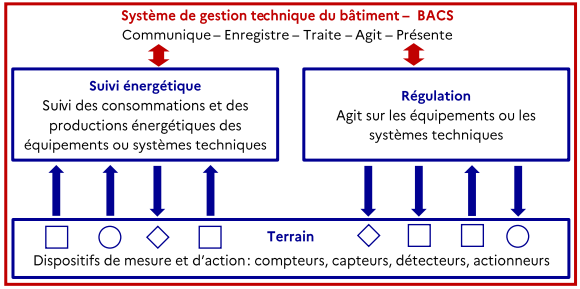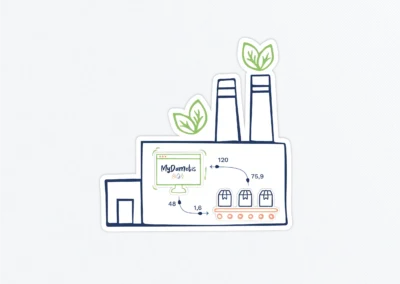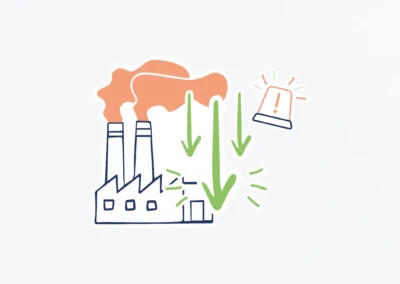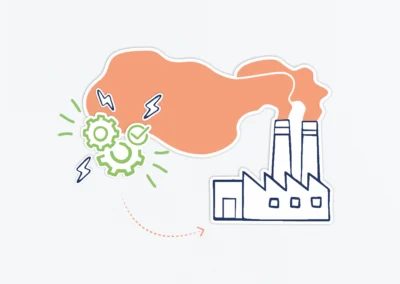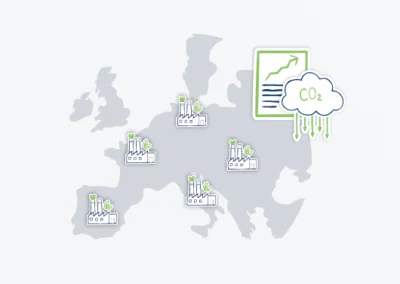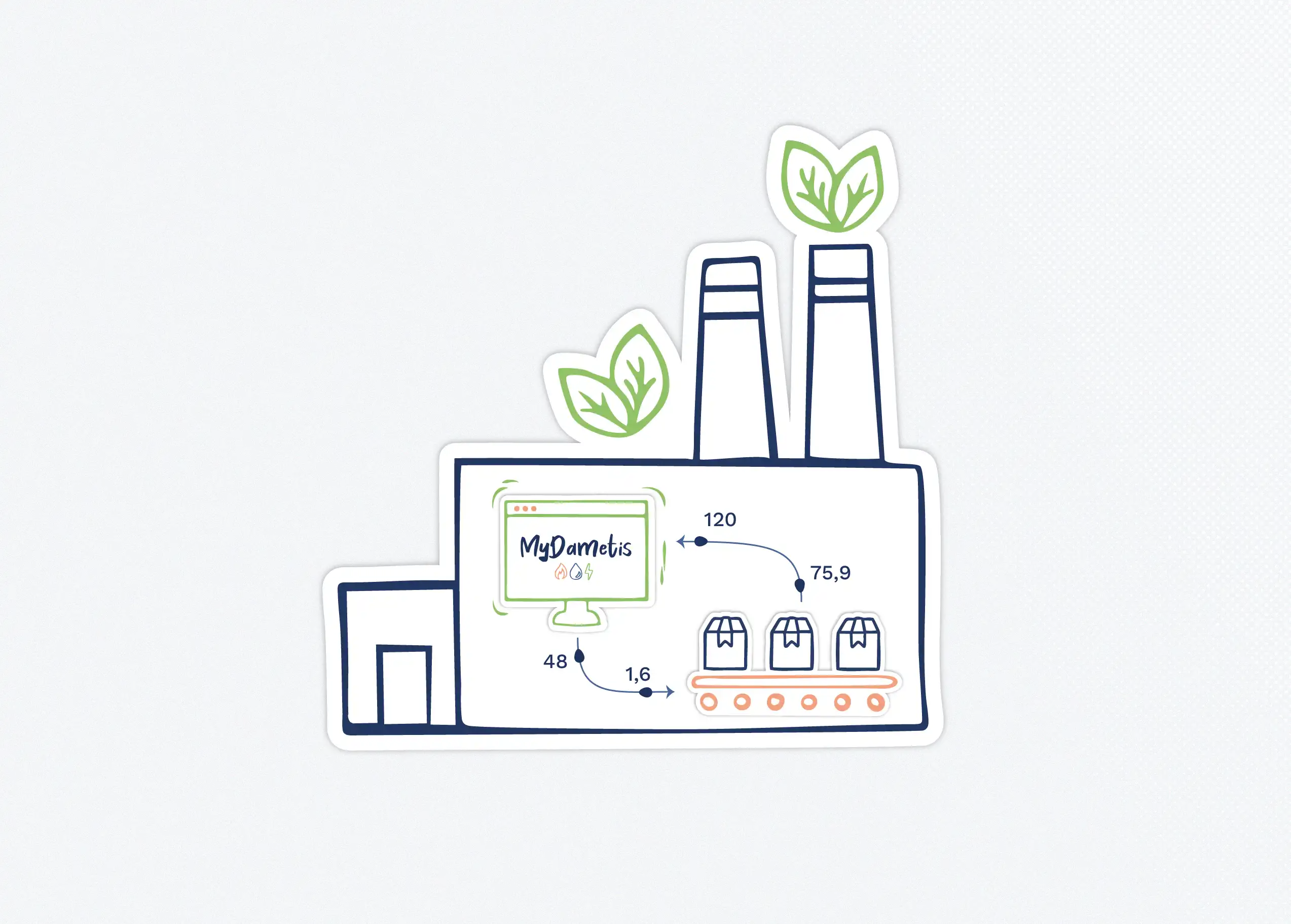
Energy performance of buildings: the deadline is approaching for the BACS decree
What is the BACS decree?
The term BACS comes from the acronym Building Automation and Control Systems.
Do you want support in decarbonizing your industry?
A BACS includes on-site measurement devices (detectors, sensors, meters, etc.) that transmit data to the system’s automatic control function, without human intervention. This control function analyzes the data and then sends commands to on-site actuators (electrical controls, contactors, valves, blinds, etc.).
What functions must be fulfilled under the BACS decree?
The BACS decree requires the installation of an automation and control system in certain commercial buildings. To implement the requirement defined by the BACS decree, namely the installation of a BACS in commercial buildings, two essential parameters must first be defined: What functions must be fulfilled? And what uses are involved?
The BACS decree specifies five key functions:
1- Continuously monitor, record, and analyze production data (where applicable) and energy consumption data for the building’s technical systems. This must allow for adjustments to be made in accordance with specifications, pre-established scenarios, and, above all, possible optimizations. Importantly, this monitoring must be carried out continuously on an hourly basis for each functional area of the building. A functional area is an area within which uses are homogeneous (e.g., office area or catering area).
2- Assess the building’s energy efficiency relative to reference values (energy audit or performance diagnosis).
3- Detect inefficiencies (failures, malfunctions, etc.) and alert the operator to correct them.
4- Be technically interoperable (data formats, protocols, etc.) with other building technical systems.
5- Allow for manual shutdown and autonomous management of systems connected to the BACS. Buildings must continue to operate normally even during repairs or system replacement.
What are the “technical systems” mentioned in the BACS decree? Here too, things are very specific. These are systems for:
- Heating
- Air conditioning
- Ventilation
- Domestic hot water production
- Integrated lighting
- On-site electricity production (e.g., rooftop solar panels)
- Any system combining multiple uses
Note: energy consumption data from these systems must be retained for five years. Also, BACS operators must be trained in its use.
Some BACS go further, integrating predictive commands based on weather forecasts or communicating with the grid to reduce energy consumption. BACS can cover a broad range of building management functions.
BACS decree: a key new deadline since January 1, 2025
The BACS decree dates back to July 2020, with a first implementation phase in July 2021. Initially, it applied only to new buildings with a nominal power exceeding 290 kW. A new decree published in April 2023 lowered this threshold to 70 kW for new buildings, effective from April 2024.
Since January 1, 2025, the obligation to install a BACS also applies to existing buildings with more than 290 kW of power. The final deadline, January 1, 2027, will extend the requirement to existing buildings above 70 kW.
The BACS decree provides an exemption from the obligation when the return on investment for installing a BACS, after evaluation, exceeds 10 years.
5 years
A BACS inspection must be carried out at least every five years (with the first due two years after the initial installation).
Are there any financial incentives for installing a BACS?
The answer is yes. Installing a BACS qualifies for the Energy Savings Certificates (CEE) scheme. Specifically, it refers to the “BAT-TH-116” form for heating use and, if applicable, domestic hot water, cooling/air conditioning, lighting, and auxiliaries.
This support scheme applies both to the installation of a BACS in a new building and to upgrades of an existing system. However, simply connecting a building to an existing BACS is not eligible. Moreover, this form cannot be combined with other eligible operations (such as LED module installation, for example).
Note: some local authorities have also introduced financial support measures for BACS installation.
The BACS decree is a way to meet the obligations and goals of the Tertiary Eco Energy decree. This decree requires existing or new buildings with more than 1,000 m² of activity space to progressively reduce their energy consumption:
- -40% by 2030 (compared to the 2010 baseline)
- -50% by 2040 (compared to the 2010 baseline)
- -60% by 2050 (compared to the 2010 baseline)
The Tertiary Eco Energy decree also imposes an annual reporting obligation via the OPERAT online platform.
Important note: while the tertiary decree imposes performance-based obligations, the BACS decree is based on means-based obligations (installation, operator training, system interoperability, BACS inspection, etc.).









